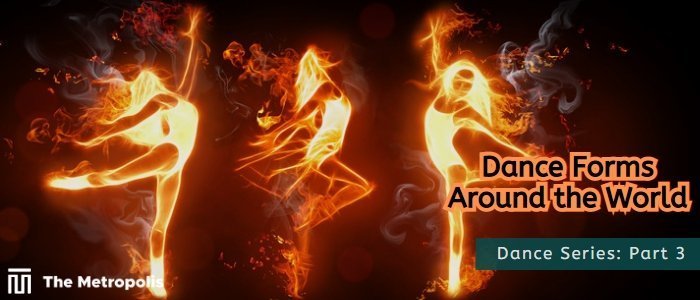Anjum Anam –
Dance is the movement of the body in a rhythmic way, usually to music and within a given space, to express an idea or emotion, release energy, or simply take delight in the movement itself. Dance is a powerful impulse, but the art of dance is that impulse channeled by skillful performers into something that becomes intensely expressive and that may delight spectators who have no wish to dance themselves.
These two concepts of the art of dance — dance as a powerful impulse and dance as a skillfully choreographed art practiced largely by a professional few — are the two most important connecting ideas running through any consideration of the subject. In dance, the connection between the two concepts is stronger than in some other arts, and neither can exist without the other.
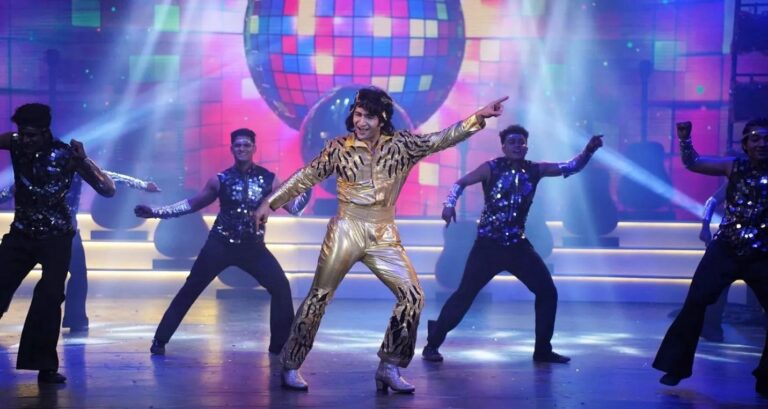
Disco dance is about more than pointing your fingers. Disco started as a mixture of music from venues popular with Italian Americans, Hispanic and Latino Americans, and black Americans in Philadelphia and New York City during the late 1960s and early 1970s. Disco can be seen as a reaction by the 1960s counterculture to both the dominance of rock music and the stigmatization of dance music at the time. Several dance styles were developed during the period of disco’s popularity in the United States, including “the Bump” and “the Hustle”.
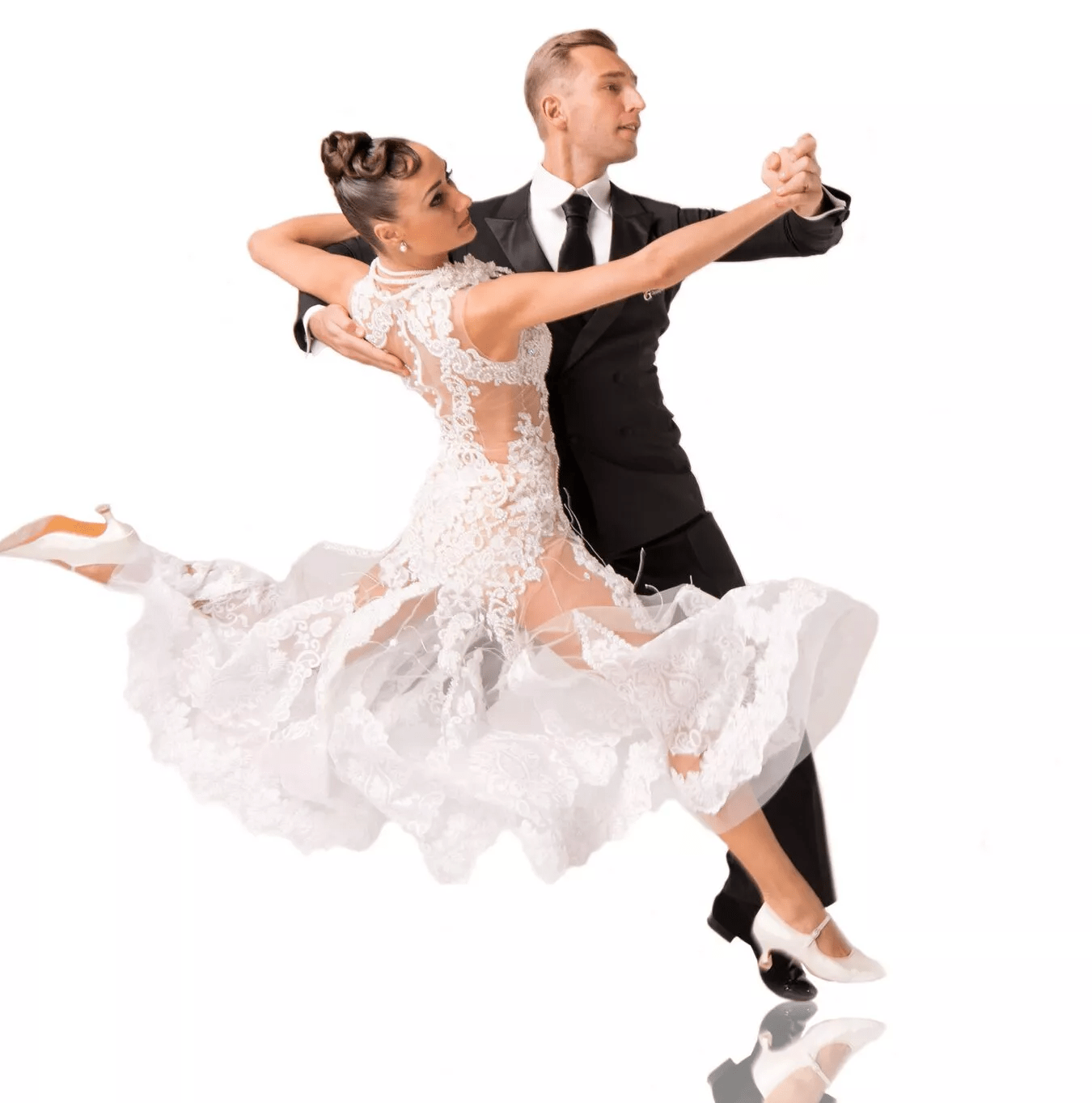
Quickstep is full of “dance” peculiarities to be expressed on the spacious ballroom floor. Few people know that due to its numerous dance combinations, it is secretly called “a small grammar book” of all the standard dances! The whole dance is like a terrific combination of incompatible elements at first sight. Jumps, kicks, turns, and body bending, all together look pretty charming, especially to the sounds of music, which make everyone, both the audience and dancers, feel like almost soaring right across the dance floor.
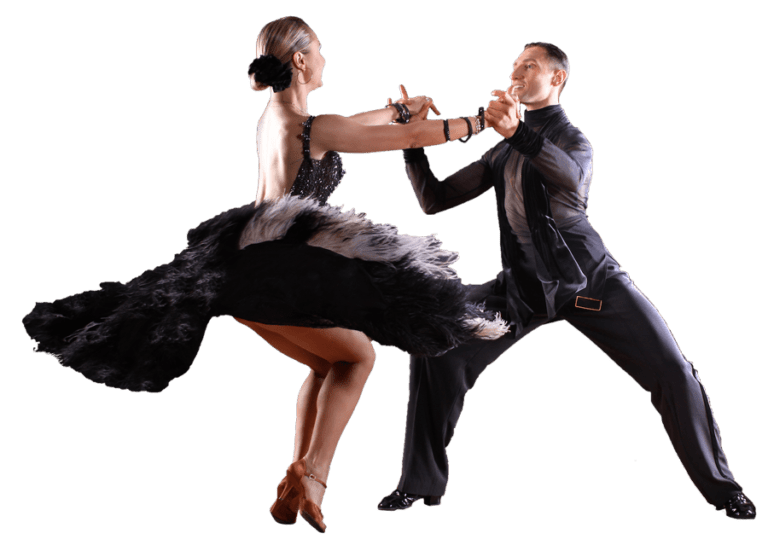
Paso Doble is a unique and the fastest dance of the whole Latin American Dance program. Danger and Desire make the dancers perform like a flash as if they are indeed fighting the bull on a sandy arena. When it comes to its sophisticated technique the dance is notably characterized by the detailed elaboration of short and abrupt body movements. The speed of this dance is so high that two partners sometimes seem to be one unit. There is no time to think or improvise, all the steps are polished to the level that they always bring up the chills to the ballroom floor whereas the driving tunes mark the start of the corrida, the fight itself, and the tremendous end of the fascinating story.
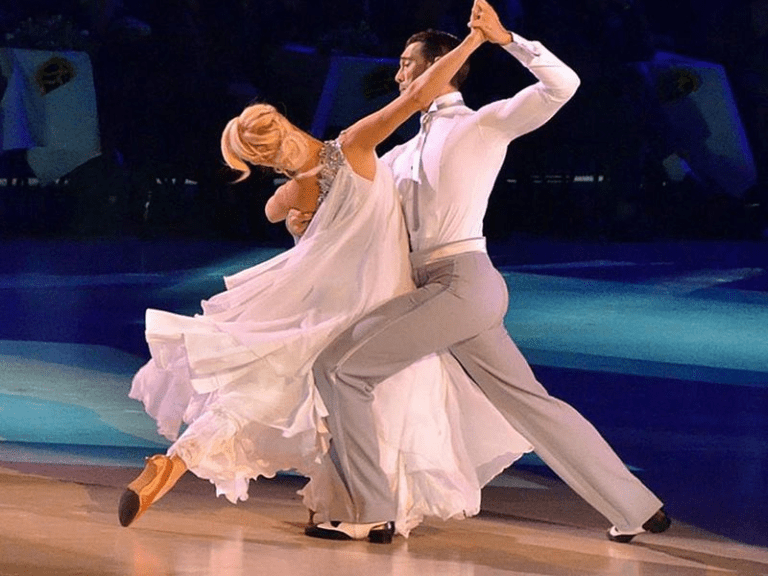
Foxtrot is fantastically tailored for improvisation which can be seen in an enormous “field” for inspiration where numerous dance combinations can be united into this or that story. Dancers change the rhythmic pattern of a dance as long as they want to retell it differently, in their unique way. The dance, where both partners are equally important and codependent requires full self and balance control. Slow-paced Foxtrot is quite demanding. It reflects the level of professionalism of the dancers. Level of proficiency is easily spotted while gliding through the dance floor and making an enchanting stop as if taking a deep breath before the next whirl of emotions expressed through the dance steps.
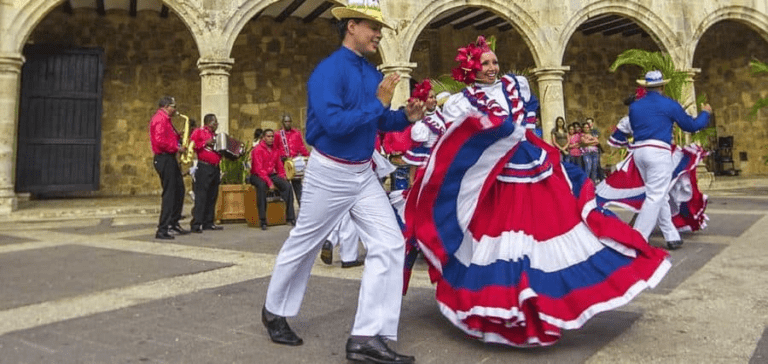
Merengue is a highly “adjustable” dance. Having learned the basic steps, the dancers tend to add their own “icing on the cake” thanks to numerous beautifying elements, such as circled hip movements, body rotation, shoulder movements, and so on. All these dance patterns are combined flexibly, the way the dancers feel right and enjoyable to this or that style of music. Partners, surprisingly, never separate neither in merengue de salón nor in merengue de figura. They just improvise as much as possible, getting loose to the hot, warm-blooded sounds of music.
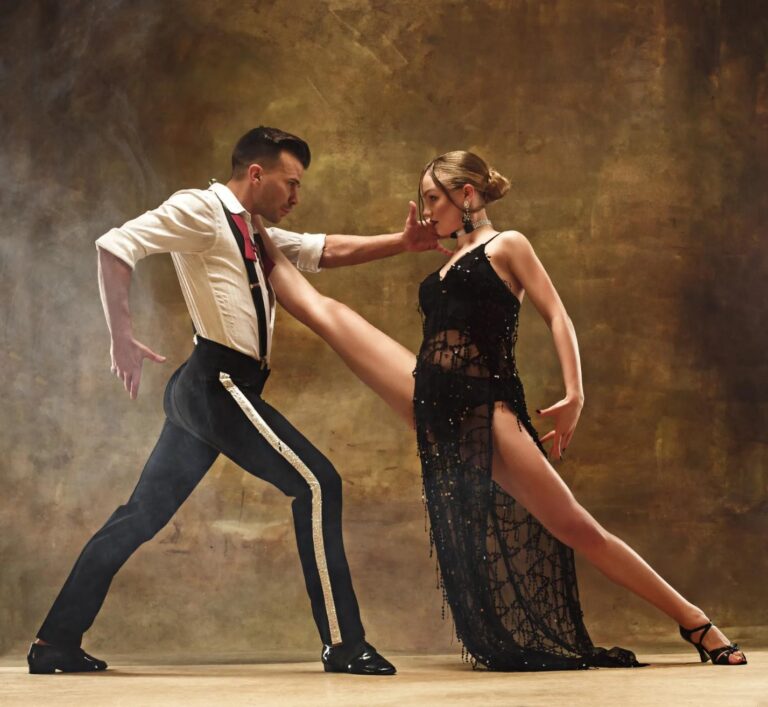
Boléro is a slow form of Spanish dance with roots in Spain and Cuba. Contemporary boléro is a hybrid of other Latin and ballroom dances and combines the lilting rise and fall of the waltz, the contra-body movement of tango, and the slow movement and Latin music associated with the rumba.

East Coast Swing is a Rhythm Dance that has both 6 and 8-beat patterns. The name East Coast Swing was coined initially to distinguish the dance from the street form and the new variant used in the competitive ballroom arena (as well as separating the dance from West Coast Swing, which was developed in California).
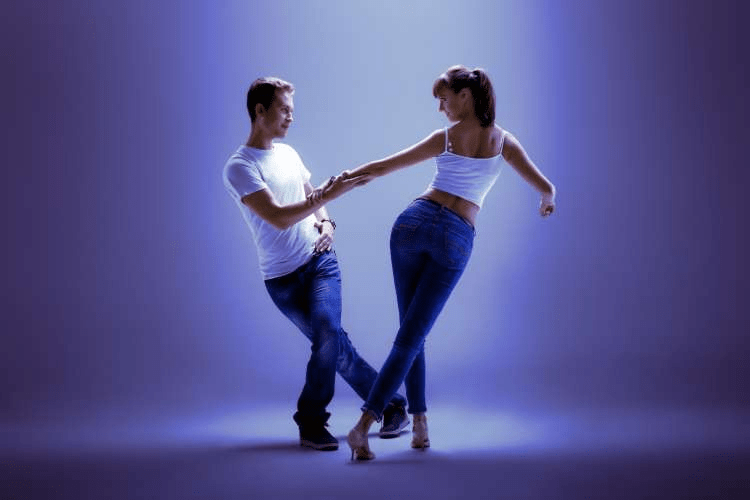
Bachata dance is known for its love stories and its syncopated rhythm. The dance was born of music in the Dominican Republic during the 1960s. Unfortunately, a dictatorship that found Bachata to be an art form of low standing held the music and the dance back for decades. Recent years, however, have seen the heartbreaking stories of the Bachata evolve and grow into a worldwide sensation.

Polka is a lively courtship dance of Bohemian folk origin. It is characterized by three quick steps and a hop and is danced to music in 2/4 time. The couples cover much space as they circle about the dance floor. Introduced in Paris in about 1843, it became extraordinarily popular in ballrooms and on the stage, sweeping across Europe and the Americas from Scandinavia to Latin America and developing many varieties. Still popular in the 20th century both as a folk dance and as a ballroom dance, polkas also appear in stage works—e.g., in Jaromir Weinberger’s opera Schwanda the Bagpiper and Bedřich Smetana’s opera The Bartered Bride.
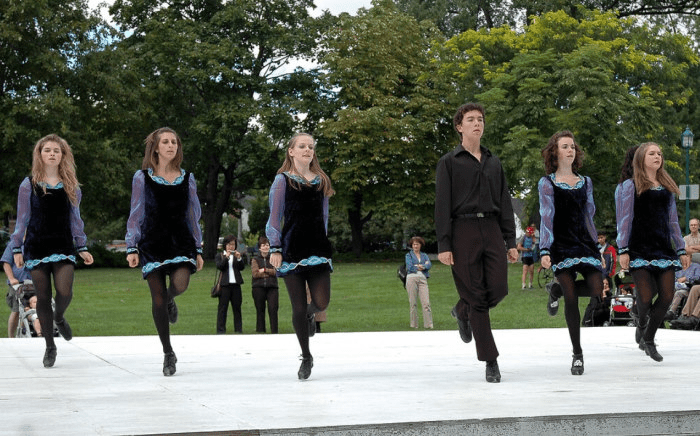
Jig is a folk dance, usually solo, which was popular in Scotland and northern England in the 16th and 17th centuries and in Ireland since the 18th century. It is an improvised dance performed with rapid footwork and a rigid torso. In England, jigs were sometimes danced across crossed flails and clay pipes; they were occasionally danced by performers wearing clogs and were akin to the modern clog dances of northern England. At the court of Elizabeth I, the northern jigs became fashionable in the 16th century, and the name was also loosely applied to other dances of folk origin. In the 16th and 17th centuries, jigs appeared as stage dances and as stylized keyboard compositions by such composers as William Byrd, John Bull, and Giles Farnaby. The jig soon spread to France and, in modified form as the gigue (q.v.), became fashionable at the court of Louis XIV.
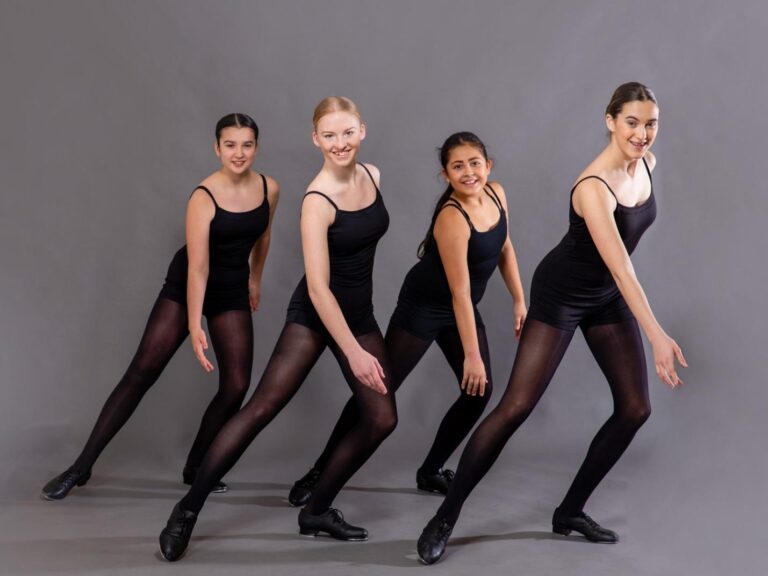
Tap dance is a style of dance in which a dancer wearing shoes fitted with heel and toe taps sounds out audible beats by rhythmically striking the floor or any other hard surface. Tap originated in the United States through the fusion of several ethnic percussive dances, primarily West African sacred and secular step dances (gioube) and Scottish, Irish, and English clog dances, hornpipes, and jigs. Until the last few decades of the 20th century, it was believed that enslaved Africans and Irish indentured servants had observed each other’s dances on Southern plantations and that tap dancing was born from this contact. In the late 20th century, however, researchers suggested that tap instead was nurtured in such urban environments as the Five Points District in New York City, where a variety of ethnic groups lived side by side under crowded conditions and in constant contact with the distinctly urban rhythms.



